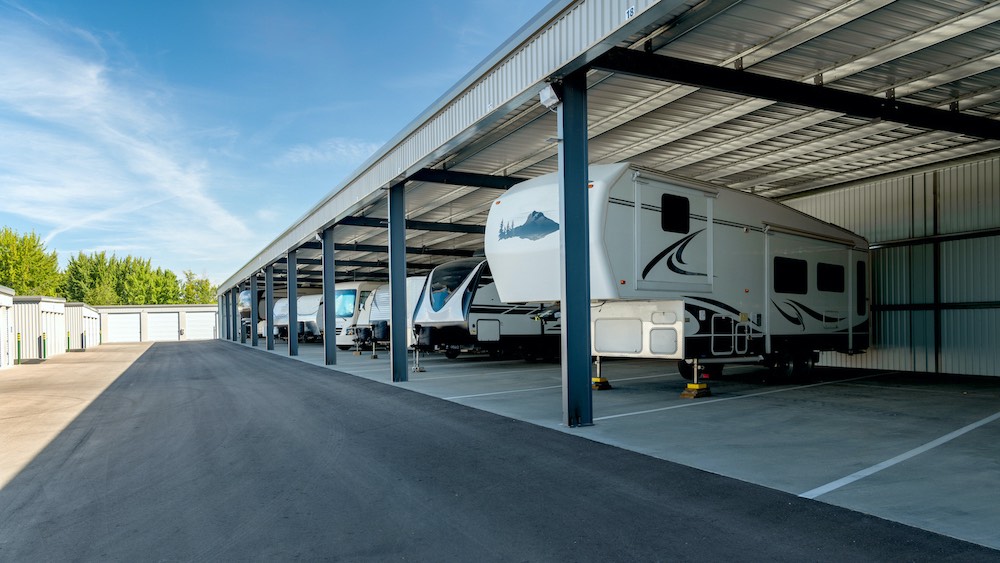Caravan & RV Storage in Australia: Keep Your Home on Wheels Safe
Whether you're an avid traveller or only hit the road occasionally, finding the right storage solution for your caravan or RV is crucial. Secure storage facilities across Australia offer a safe place to park your home on wheels, freeing up space in your driveway while protecting your vehicle from the elements. Here’s everything you need to know about caravan and RV storage options, costs, and preparation tips.
Popular Caravan & RV Destinations in Australia
Australia is a paradise for caravan and RV enthusiasts, with breathtaking road trip destinations such as:
- The Great Ocean Road (VIC) – A scenic coastal drive with stunning cliffs and beaches.
-
The Red Centre (NT) – Explore Uluru, Alice Springs, and Kings Canyon.
-
The Kimberley (WA) – Remote and rugged landscapes with gorges and waterfalls.
-
The East Coast (QLD & NSW) – Travel from Sydney to Cairns via Byron Bay, the Gold Coast, and the Whitsundays.
-
Tasmania – A road-tripper’s dream with stunning national parks and historic sites.
- The Nullarbor Plain (SA & WA) – The ultimate outback adventure.
After exploring, secure storage facilities in cities like Melbourne, Sydney, Brisbane, Perth, Adelaide, and Darwin provide convenient options for parking your caravan or RV until your next adventure.
What Are the Options for Storing a Caravan or RV?
- Outdoor Storage: A cost-effective and popular choice, outdoor storage allows you to park your caravan or RV in a designated area within a secure facility. While it provides protection from theft and vandalism, your vehicle remains exposed to Australia’s harsh weather, including sun, rain, and hail.
-
Outdoor Covered Storage: A step up from open-air storage, this option provides a shelter that offers protection from direct sunlight, rain, and hail, helping to preserve your vehicle’s exterior and interior.
-
Indoor Storage: The premium choice, indoor storage keeps your RV or caravan completely enclosed, protecting it from weather damage, dust, and UV rays. This is ideal for long-term storage, particularly in areas prone to extreme weather.
Why Use Caravan & RV Storage?
- Space Saving: Free up room in your driveway or yard.
-
Security: Protect your vehicle from theft, vandalism, and accidental damage.
-
Weather Protection: Reduce exposure to sun, rain, and hail, which can cause fading, leaks, and deterioration.
-
Convenience: Many facilities offer easy access, security monitoring, and maintenance options.
What Types of Caravans & RVs Can Be Stored?
- Motorhomes (Class A, B, and C RVs)
-
Caravans (single and dual-axle models)
-
Camper Trailers
-
Pop-Tops & Expandables
-
Fifth-Wheelers
-
Slide-On Campers
Storage Space & Features
Storage spaces range from 5 to 15 metres in length, with extra-large spaces available for oversized RVs. Features to consider include:
- 24/7 Access (some facilities have restricted hours)
-
Security Cameras & Gated Entry
-
Electricity Hookups & Water Access
-
Dumping Stations & Wash Bays
How Much Does Caravan & RV Storage Cost in Australia?
Storage prices vary based on location, security, and amenities. Here’s a rough guide:
- Outdoor Storage: $50 - $150 per month
-
Outdoor Covered Storage: $100 - $250 per month
-
Indoor Storage: $200 - $500+ per month
Prices can be higher in metropolitan areas like Sydney, Melbourne, and Brisbane, while rural locations may offer more affordable options.
How to Prepare Your Caravan or RV for Storage
Step 1: Gather Supplies
- Cleaning supplies for interior & exterior
-
WD-40 for hinges & locks
-
Garbage bags & storage boxes
-
Non-toxic RV antifreeze (for colder regions)
-
Water heater bypass kit (if needed)
-
Mothballs & insect deterrents
Step 2: Clean & Protect the Interior
- Strip beds, wash linens, and store in sealed bags
-
Empty and clean the fridge & freezer, leave doors open
-
Place moisture absorbers inside to prevent mould
-
Set insect traps and mothballs in key areas
-
Open cupboard doors for ventilation
-
Store kitchenware in airtight containers
Step 3: Electronics & Appliances
- Remove or disconnect batteries from electronics
-
Follow manufacturer instructions for winterizing appliances
-
Unplug and clean the microwave, TV, and other devices
Step 4: Water System Maintenance
- Drain fresh, grey, and black water tanks
-
Lubricate valves with WD-40
-
Drain water heater (after cooling)
-
Open faucets, toilet, and external shower to release pressure
-
Add non-toxic antifreeze if storing in colder areas
Step 5: Electrical System & Battery Care
- Disconnect the battery and store in a cool, dry place
-
Turn off the battery disconnect switch
-
Remove dry-cell batteries from smoke detectors, clocks, etc.
Step 6: Exterior Protection
- Wash and wax the RV or caravan to protect against dirt & UV rays
-
Close all blinds and use sunshades to prevent fading
-
Clean and dry the awning before rolling it in
-
Lubricate door hinges and locks
-
Ensure all windows and doors are closed and locked
